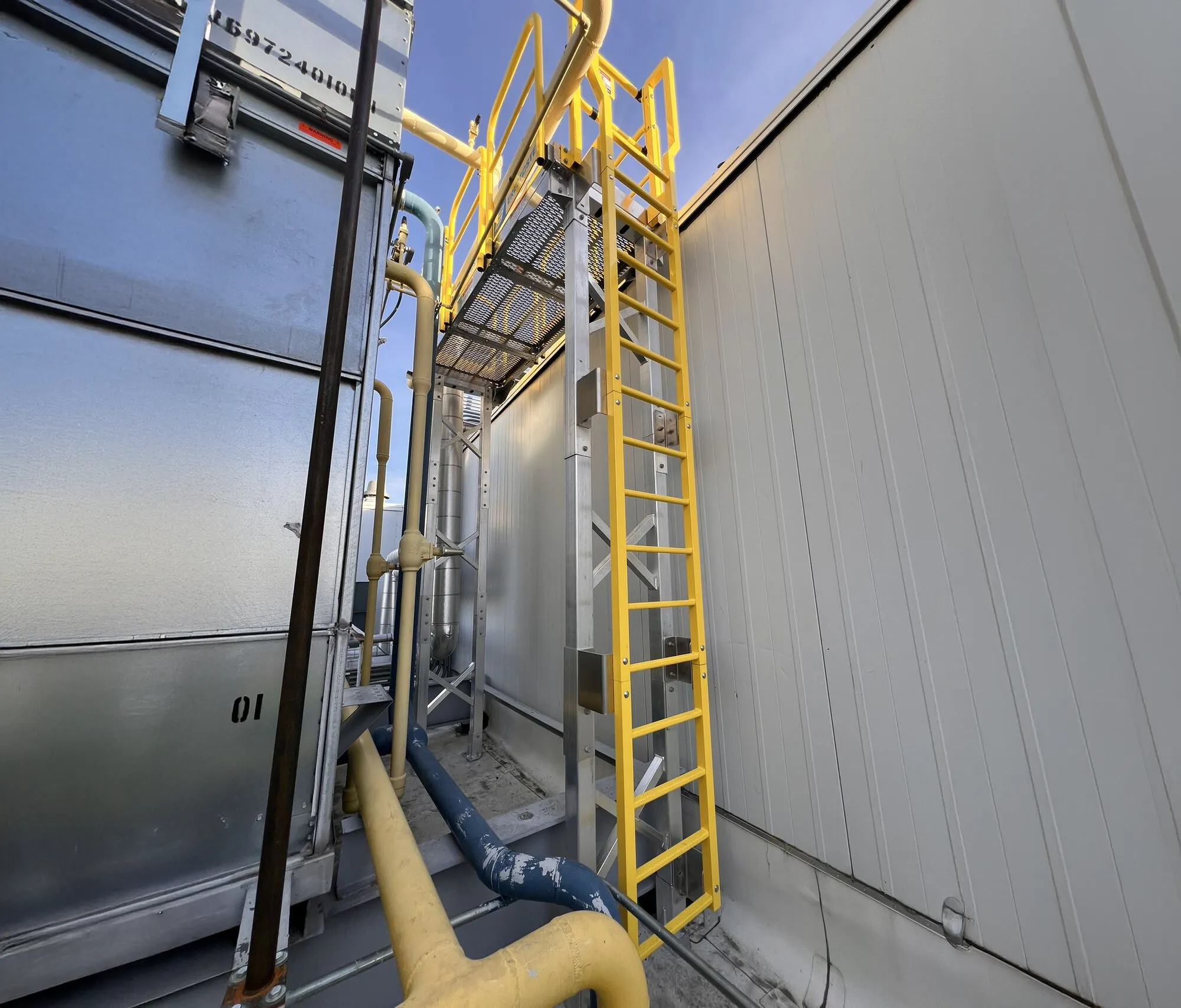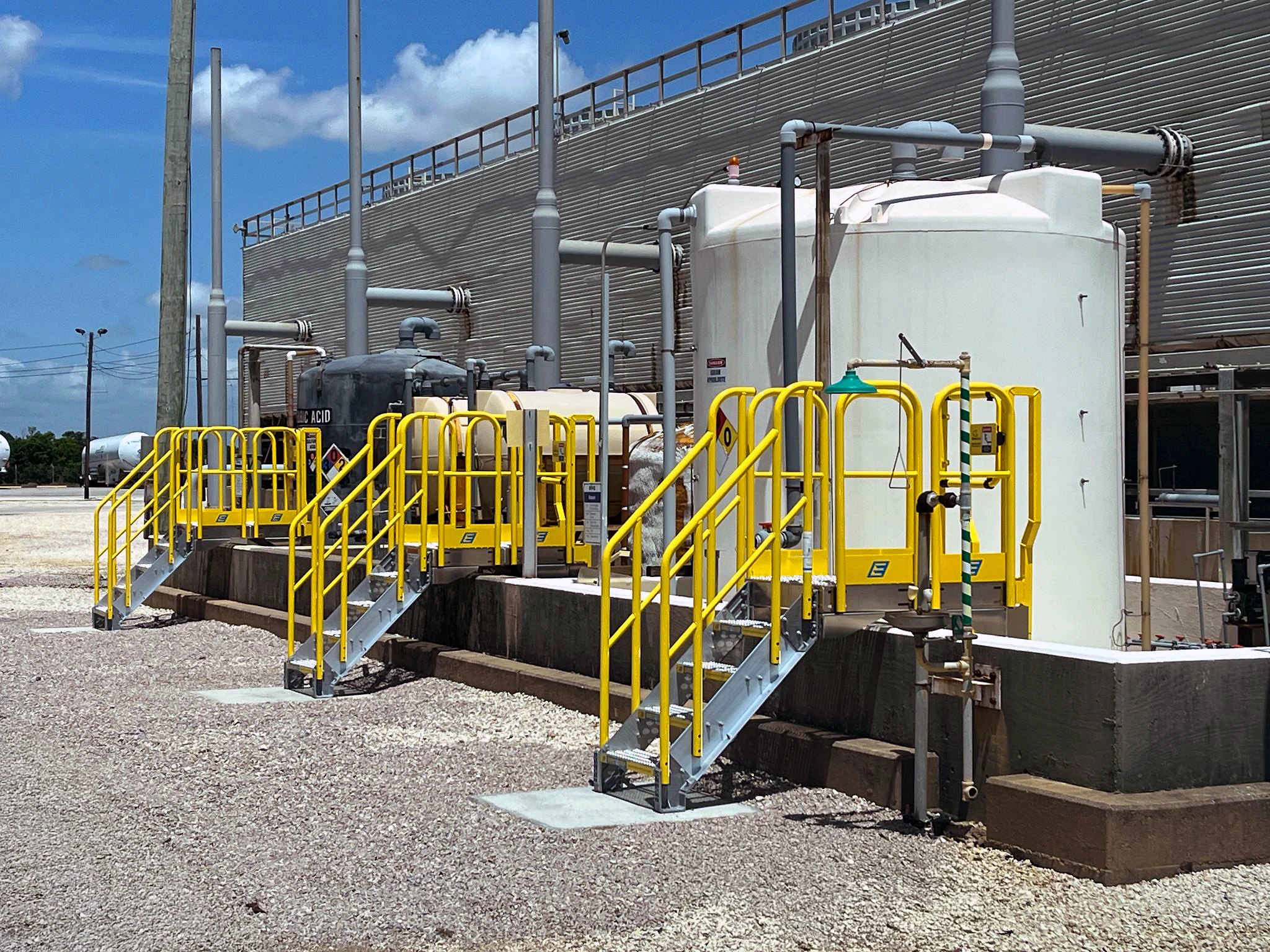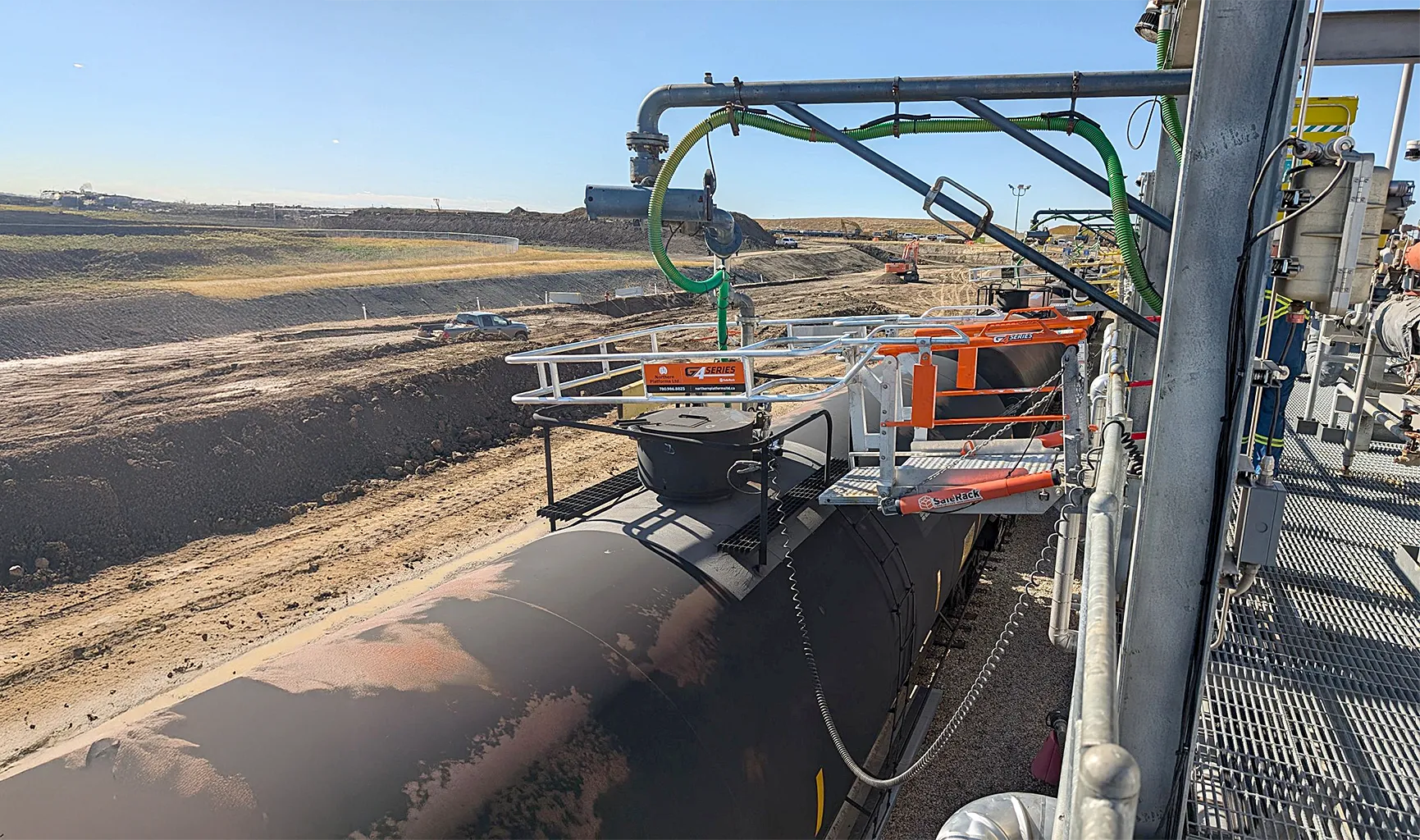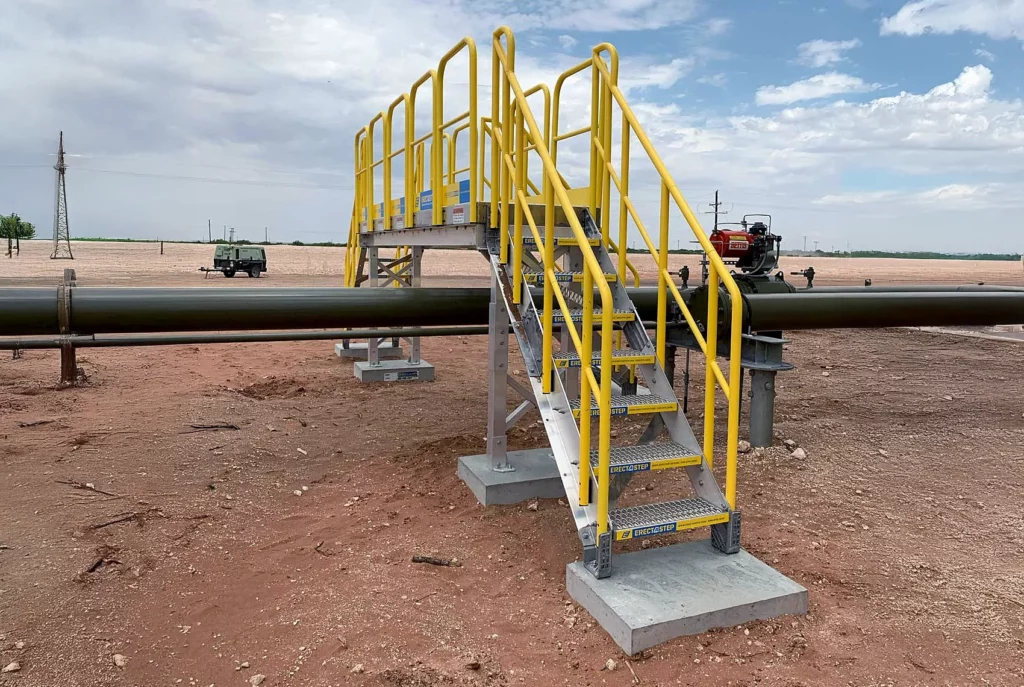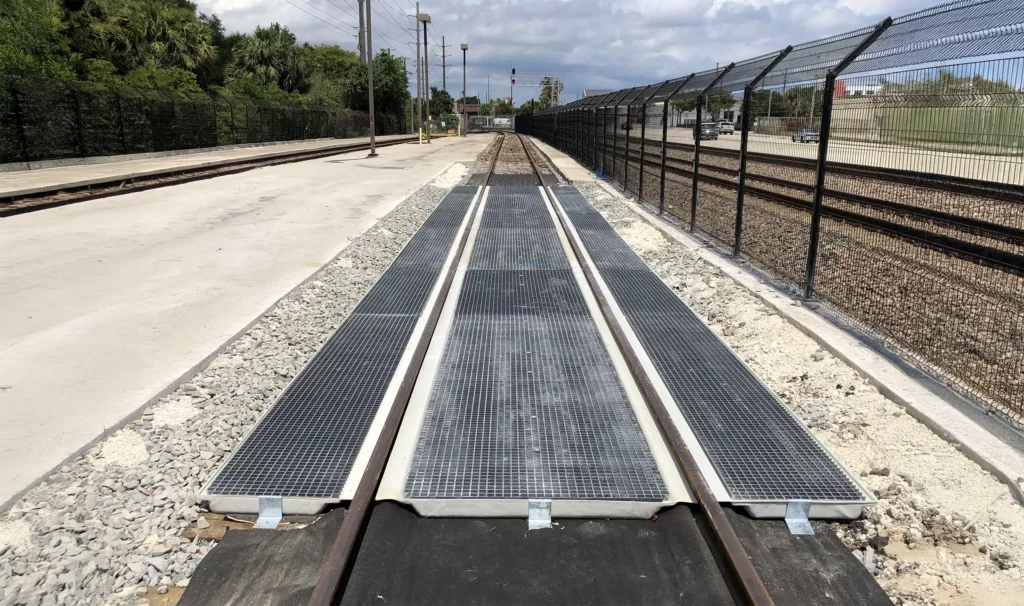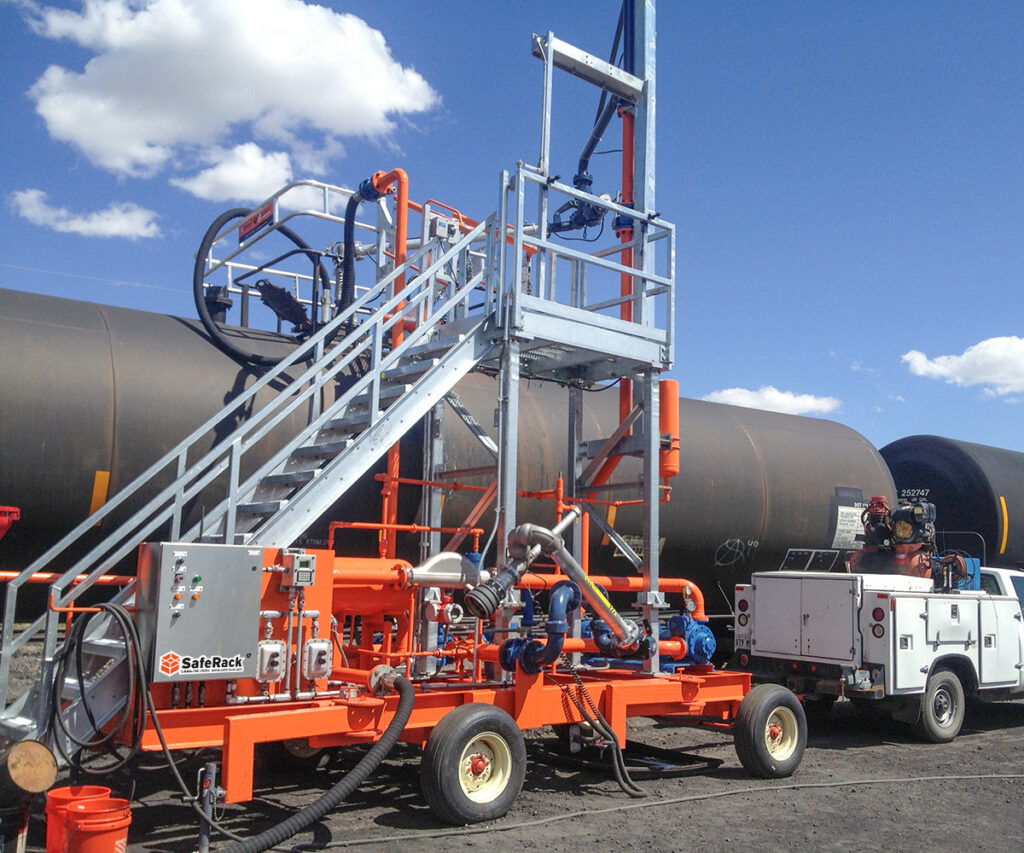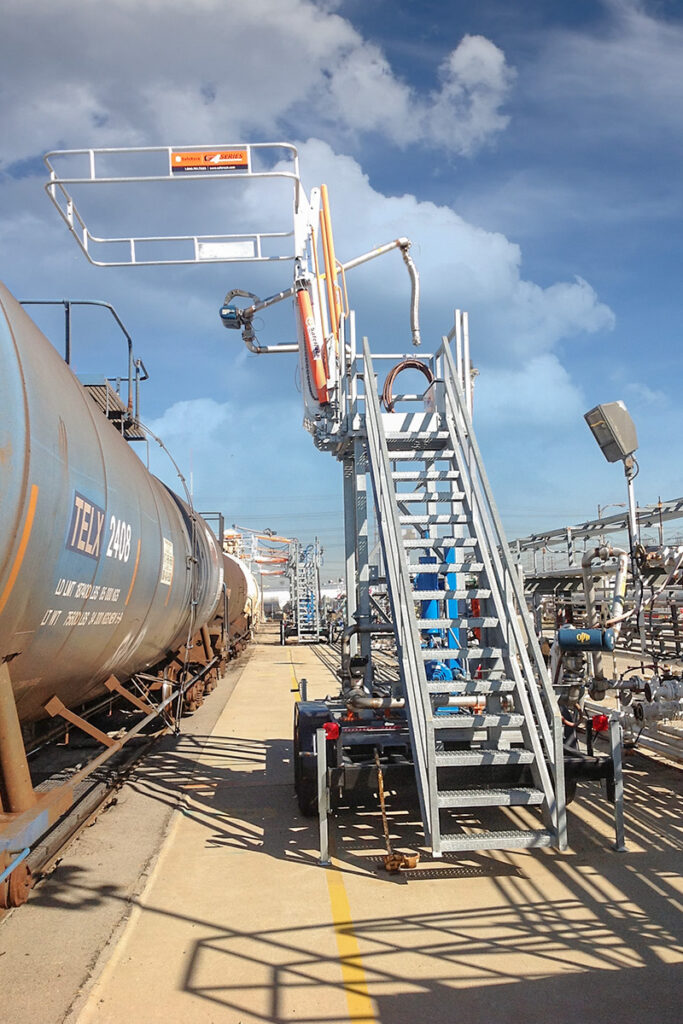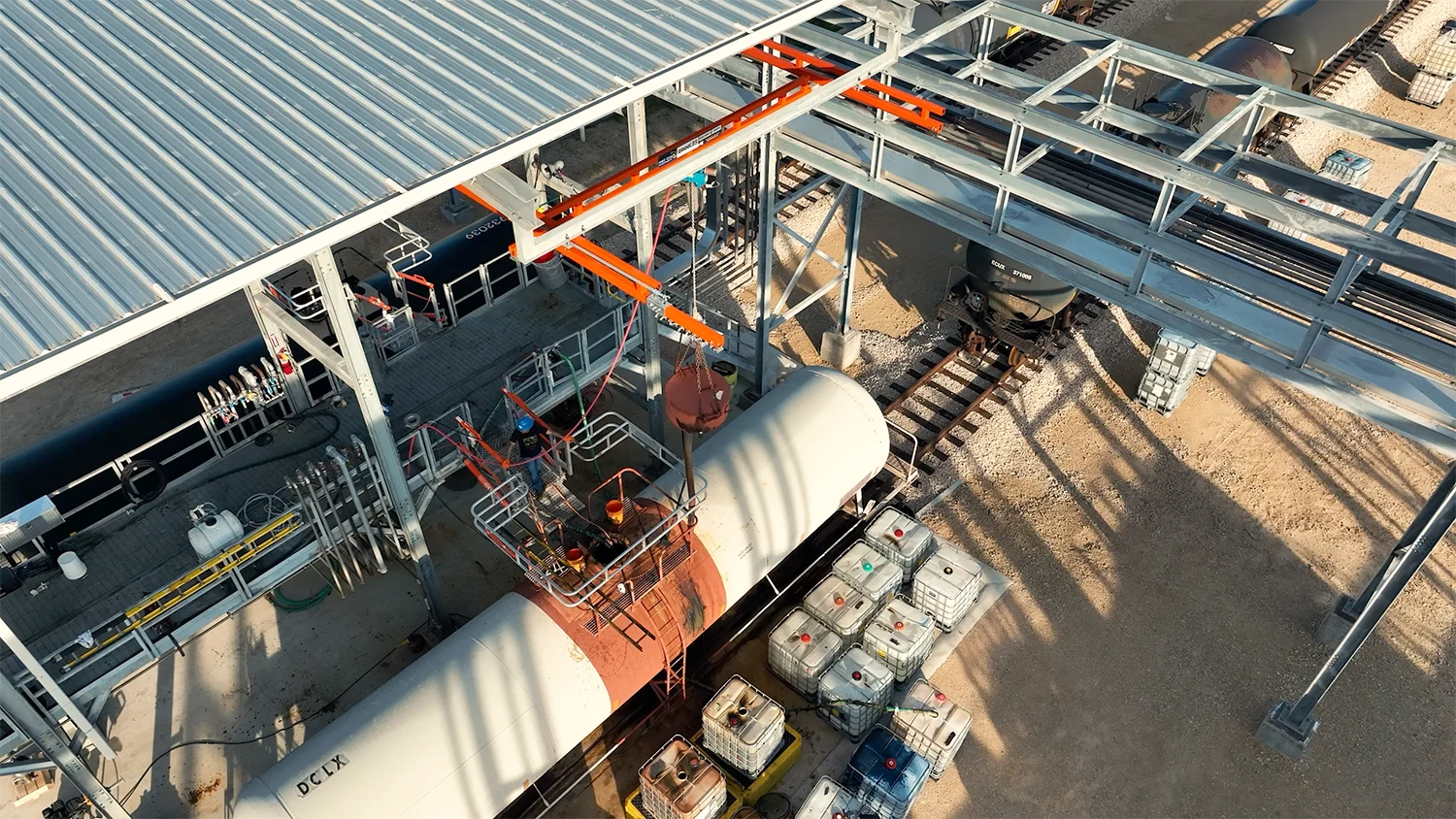Renewable Diesel
SafeRack takes worker safety very seriously and offers a full range of products and equipment designed specifically to reduce the risks associated with bulk chemical loading transportation while improving loading and unloading throughput.
Renewable Diesel Handling
Operator and Environmental Safety – SafeRack has been providing safe, reliable platforms, handrails, and gangway solutions to the chemical industry for many years. From multifaceted fall prevention retrofits to new builds, SafeRack’s priorities are operator and environmental safety while still focusing on creating an efficient and productive solution that allows a significant return on investment.
Renewable Diesel
Renewable Diesel Chemical Overview
As mentioned earlier, biodiesel is made from a diverse mix of resources (feedstock) such as recycled cooking oil, soybean, and animal fats.
What is Renewable Diesel?
Renewable diesel, also known as hydro-treated vegetable oil (HVO), is made from natural waste like vegetable oil and grease. It’s also 100% renewable because it’s made from products that are constantly being regrown from the earth. The difference between biodiesel and renewable is how it’s processed, and they are not the same.
Because it’s hydrogenated, renewable diesel doesn’t contain oxygen, and therefore users will not encounter the challenges biodiesel presents relating to freezing temperature and storage. Thanks to hydrogenation, renewable diesel also burns cleaner than biodiesel. Also, because it has the same chemical structure as petroleum diesel, renewable diesel can be used in engines that are designed to run on conventional diesel fuel — with no blending required.
On the other hand, traditional Biodiesel is made through a chemical process called transesterification, whereby the glycerin is separated from the fat or vegetable oil. This process results in two by-products – methyl esters and glycerin. Methyl esters is the chemical name for biodiesel. The other by-product is glycerin is used in a variety of products, including soap.
Because of their high flash point, greater than 200 degrees F, both renewable diesel and pure biodiesel can be transported without any DOT placards. However, blended biodiesel does require warning signs if the flash point is lower than 200 degrees F.
Oxidation can be another issue, which causes sediments to form in the fuel, which in turn can cause clogged fuel filters. Biodiesel made from unsaturated fats (i.e. vegetable oils) tends to oxide and degrade faster than biofuel made from saturated fats, such as animal fats.
Storage conditions are also very important. For example, biodiesel should not be stored or transported in copper, bronze, lead, tin or zinc because these metals will hasten degradation. Containers made from aluminum, steel, polyethylene or polypropylene, Teflon, or fiberglass are the recommended choice. Acceptable gasket seal material on process piping and loading arms include Teflon, Viton, and fluorinated plastics.
Heat, sunlight, and oxygen will also cause biodiesel to degrade more rapidly. In addition, if biodiesel will be stored for longer than four to five months, a stability additive should be used, especially in the deep South due to increased temperature and humidity.
Biodiesel can also degrade in the presence of water. During storage and transportation, moisture from the air, or any water in the piping or tanks can contaminate the fuel. Up to 1,500 ppm of water can dissolve in biodiesel, after that limit is reached the excess water is referred to as “free water” This free water causes engines and storage tanks to rust and allows microbes to grow in the fuel. Dissolved in water, biodiesel can cause acids to form in the fuel, which can eventually eat a hole in the storage tank or process piping.
The gel (freeze) point of biodiesel depends on the oil or fat from which it was made. Biodiesel made from saturated fats tends to gel at higher temperatures than those made from unsaturated fats. In general, pure biodiesel made from vegetable (soybean) oil can safely be stored at 45 to 50 degrees F. In cold climates underground tanks can prevent gelling. Above ground tanks will need to be heated or insulated, depending on the location.
On the other hand, the benefits of renewable diesel include:
- Doesn’t gel like traditional biodiesel
- No need to blend with diesel, unlike biodiesel which is typically blended between 5 to 20 percent.
- Compatible with existing infrastructure including current diesel engines
Only properly trained and equipped personnel should be permitted to (un)load tank cars and tank trucks. Operators should wear approved PPE equipment including impervious clothing, footwear, gloves, and goggles. Operators should avoid breathing mists and sprays, and they should wash any exposed skin thoroughly after handling.
First aid measures for exposure to renewable diesel include – removing operators from the source of exposure and into fresh air. Remove contaminated clothing immediately; wash skin thoroughly with soap and water; flush eyes with tepid water for 15 minutes. If ingested do not induce vomiting, but immediately call your local poison control center. Aspiration into the lungs can cause fatal chemical pneumonitis. If ingestion has occurred, assume there is a risk of aspiration into the lungs.
Renewable Diesel Products
Truck Gangways
The industry’s safest and most ergonomic gangway for truck loading and access.
Railcar Gangways
The industry’s safest and most ergonomic gangway for accessing and loading railcars
Track Mounted Gangways
Gangways that can be horizontally positioned to access top hatches without repositioning the vehicle.
Semi Trailer & Truck Steps
Semi-truck steps for loading semi and flatbed trailers
Samplers and Oil Thieves
Crude oil samplers, including oil thieves and sample catchers.
Barrier Gates
YellowGates XL barrier gate provides 6 feet of adjustability protects every pathway in your facility
Railcar Movers & Brake Sticks
SafeRack’s railcar wheel chocks provide fast blocking of all types of railcars
Safety Swing Gates
YellowGate – The Original Universal Self Closing Safety Gate
Loading Dock Stairs
Prefabricated IBC, ADA, or OSHA Aluminum Loading Dock Steps that bolt together in about an hour.
Skids
Transloading Skids
Rolling Work Platforms
The MP Series is a highly mobile rolling work platform designed to bring the workspace and stability of a fixed platform to a rolling stair mobile unit.
Signs and Signals
Signs and Signals
Railcar Chocks/Blocks
SafeRack’s railcar wheel chocks provide fast blocking of all types of railcars
Lighting
Industrial Lighting Solutions for Hazardous Environments
Drench Showers
Emergency Drench Showers and Safety Eyewash Stations
Pipe Racks
Prefabricated Pipe Racks Constructed Faster and Easier Than Ever Before
Tools and Loading Accessories
A comprehensive range of facility and loading terminal equipment, accessories and safety solutions.
Metering
Pressure Gauges, Meters, Sight-flow indicators
Overfill Protection
Preventing costly spills and ensuring safety during tank loading operations
Grounding/Earthing
Protect personnel, product, and terminals with static grounding (earthing)
Grounding & Monitoring
Protect personnel, product, and terminals with static grounding (earthing) solutions
Beam Trolley & Lifeline
Fall Arrest Systems for Horizontal Mobility at Heights
Safety Gates
Industrial safety swing gates, facility guardrails, mezzanine gates and barriers gates.
Drum & IBC Spill Containment
Interior and exterior SPCC compliant and EPA approved spill pallets
Truck Spill Containment
SPCC & EPA Compliant Truck Spill Containment Solutions
Railcar Track Pans
SPCC & EPA Compliant Track pans for capturing hazardous spills from railroad tankers and railcars
Spill Containment
SPCC and EPA compliant solutions. Railcar track pans, truck spill containment, drum and IBC spill pallets, and industrial containment berms.
Top Loading Arms
Top Loading Arms
Loading Arms & Couplings
Truck, rail, and marine bulk fluid transfer top/bottom loading arms, couplings, swivel joints, hoses, and breakaways.
Safety Cages
Fall prevention enclosures for accessing trucks or railcars.
Portable Access Platforms
SafeRack’s MAUI mobile access units provide secure, adjustable stair solutions for safely accessing elevated truck and railcar work areas, even in the most challenging environments.
Transloaders & Metering Skids
Metering skids configured for a variety of materials, including propane, ethanol, crude oil, aviation fuel, NGL, LPG, and other refined petroleum products.
MaxRack Elevated Platforms
Powered elevating platform system for accessing railcars and trucks
Ship, Fixed and Rolling Ladders
Fixed ladder, steep inclined ship ladders and rolling ladders for areas where standard stair length runs are not feasible.
Crossover Stairs
Crossover Stairs
Industrial Metal Stairs
Prefabricated industrial metal stairs and access platforms offer safe, durable, and expandable access with quick, no-fabrication installation.
Truck & Railcar Gangways
The industry’s safest and most ergonomic gangway for truck and railcar access.
Gangways
Truck, Railcar and Marine Gangways, Safety Cages, and Inspection Services
Stairs & Work Platforms
Fixed and Mobile Access Stairs, Work Platforms, Crossover Stairs, Rolling Stairs & Mobile Platforms, Roof Stairs and Access, Ship Ladder
Renewable Diesel
Solutions
Below are some of the loading and unloading solutions for illustrative purposes only. Our experts will work with you and your team for a custom solution to suit your needs.
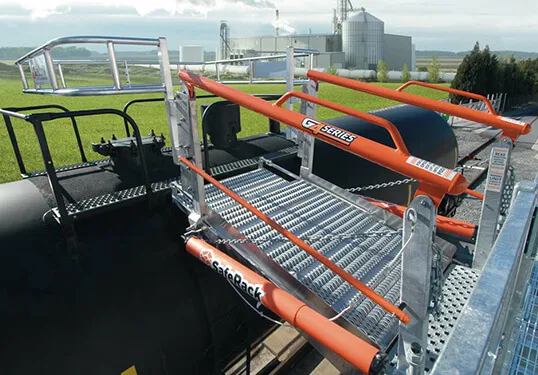
Loading Gangways & Safety Cages
Wide access gangways (48″-60″) are preferable to allow safe access and egress to and from the vessel. In addition, a wider gangway reduces the risk of PPE getting caught, torn or damaged, while improving productivity and safety. Powered gangway solutions allow for hydraulic and pneumatic use, reducing stress and strain on operators.
Each gangway is fitted with a two-rail safety cage for the railcar crash box or a four-rail safety cage for access trucks.
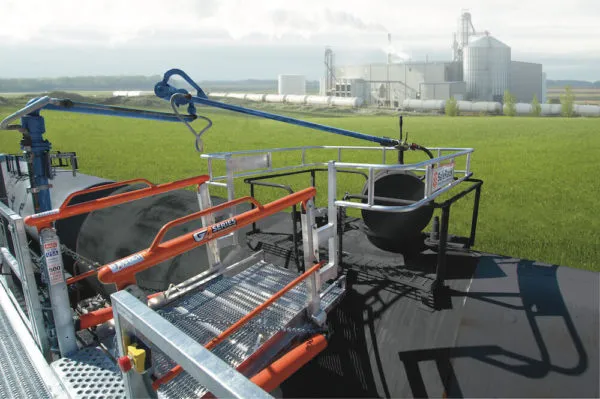
Loading Arms
Chemicals are typically loaded into railcars or tank trucks via boom-supported 316 stainless steel loading arms or chemical hoses with a flange connection. The arm or hose uses a top inlet with a control valve to ensure that it is self-draining after use and is supported along the length of a mechanical loading arm (by-pass arm) to improve handling. When required, a vapor hose can be mounted on one by-pass arm.
When unloading, use of a rigid 316 stainless steel arm with EPDM or PTFE seals or a braided stainless steel chemical hose is typical. Purge lines can be fitted to the arm for nitrogen purging. Additional features such as parking latches with proximity sensors can be incorporated into the total system to ensure the arm is correctly stowed when not in use to prevent rail movement.
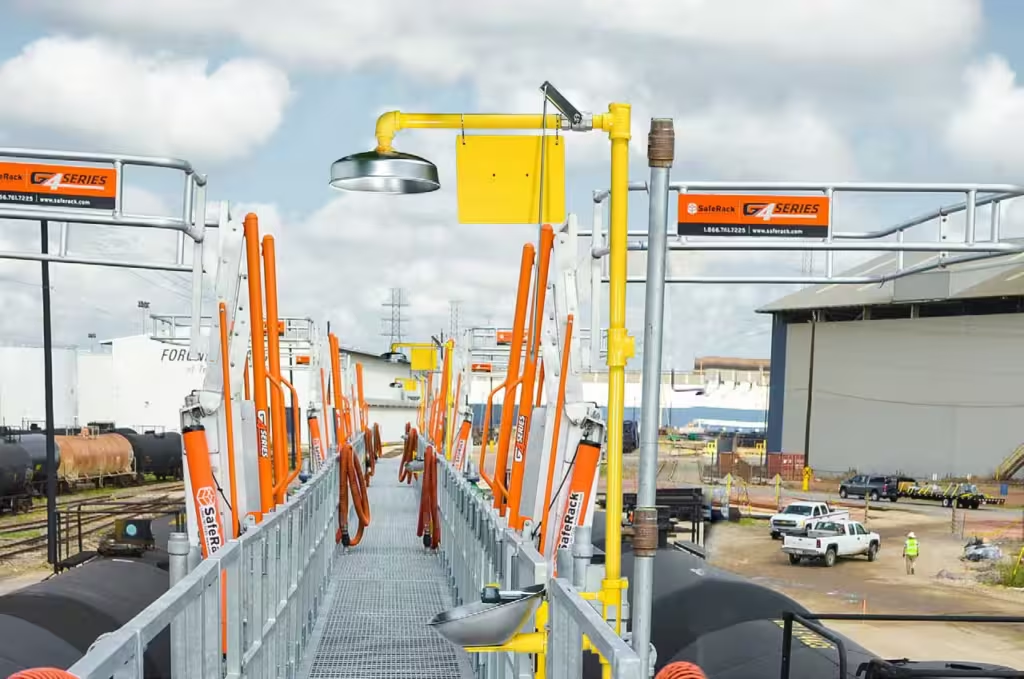
Eye Wash/Drench Showers
ANSI guidelines state that an Eye Wash/Drench Showers need to be located 10 seconds or 55’ (16.8m) from contaminants or hazardous materials.
Eyewash stations need to be on the same horizontal plane with no obstructions.
Therefore, we propose installing a standard combination Drench Shower/Eyewash Unit, which will save limited space and fit easily into any work environment.
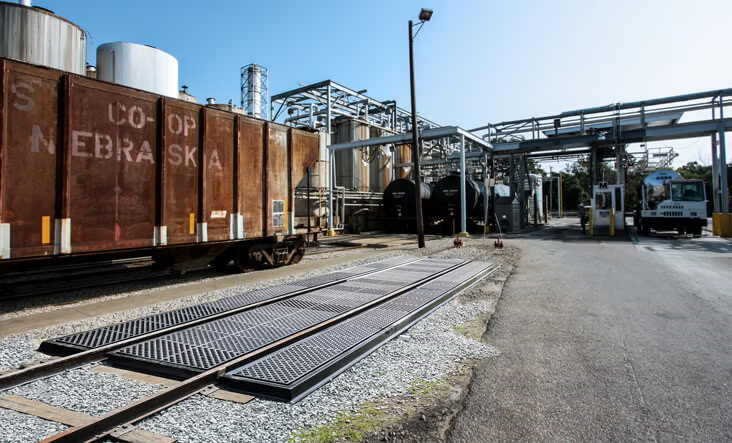
Spill Containment
Spill containment, such as railcar track pans will be provided at the point of loading operations and are an essential piece of equipment in overall site safety and environmental protection.
Wheel chocks allow for safe access to and storage of treatment chemicals, while spill containment pans utilized at the point of loading operations serve as essential safety and environmental protection tools.
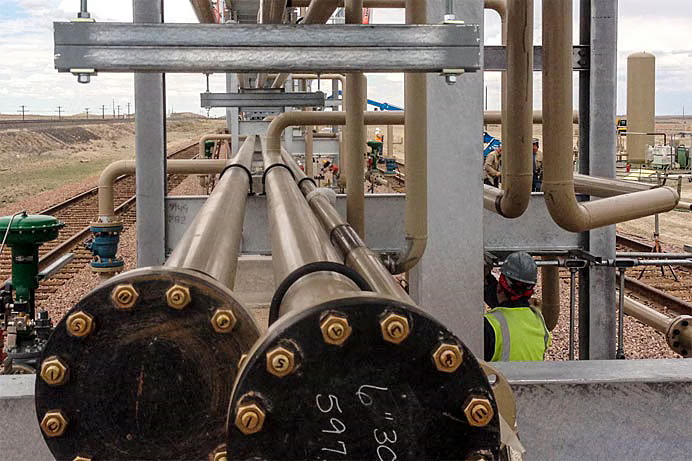
Piperacks
Because chemical plants have pipe runs throughout the facility, ErectaRack pipe racks are pre-fabricated for a variety of pipe dimensions and applications. Because they’re pre-engineered, ErectaRack skips the long engineering and fabrication process, saving weeks, if not months in the installation process.
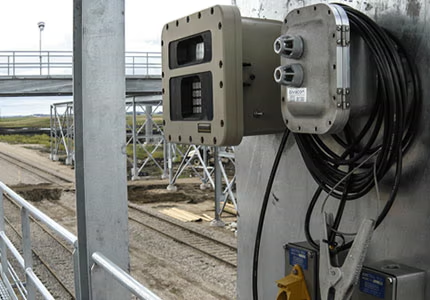
Grounding
Proper grounding is essential when loading and unloading chemicals to prevent static electricity buildup, which can cause sparks and lead to fire or explosion hazards. SafeRack offers grounding systems designed to ensure a secure connection between the transport vehicle and the facility, meeting industry safety standards while protecting personnel and equipment.
Vehicle grounding and bonding — ensure true grounding before product flow is permitted

Safety Gates, Stairs, Ladders, & Platforms
Safety Gates will be installed at the top of stairs and any other openings to ensure operator safety.
SafeRack’s line of industrial safety gates is the most flexible product on the market with the ability to span openings between 16” and 36” and is field adjustable with nothing more than a wrench. We also have guardrails, metal handrails, and full-fledged fall protection solutions with customizable options to fit your needs.
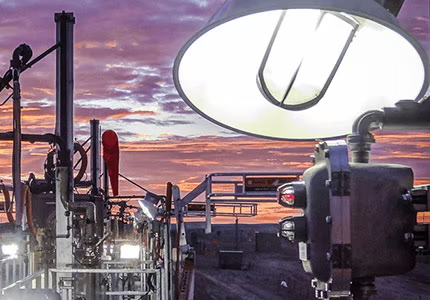
Loading Platform Options
Lighting – General exterior and task lighting to illuminate work and walk areas.
Platform & Canopies – Full platform canopies reduce exposure to the elements and improve the safe and productive loading operation from the operator’s perspective.
Operator Shelter—Depending on your site requirements, consider the requirement of an operator or guard building to keep personnel out of the elements. This can be customized to meet specific site requirements.
Wheel Chocks – SPCC options to allow for safe access and storage of water treatment chemicals.
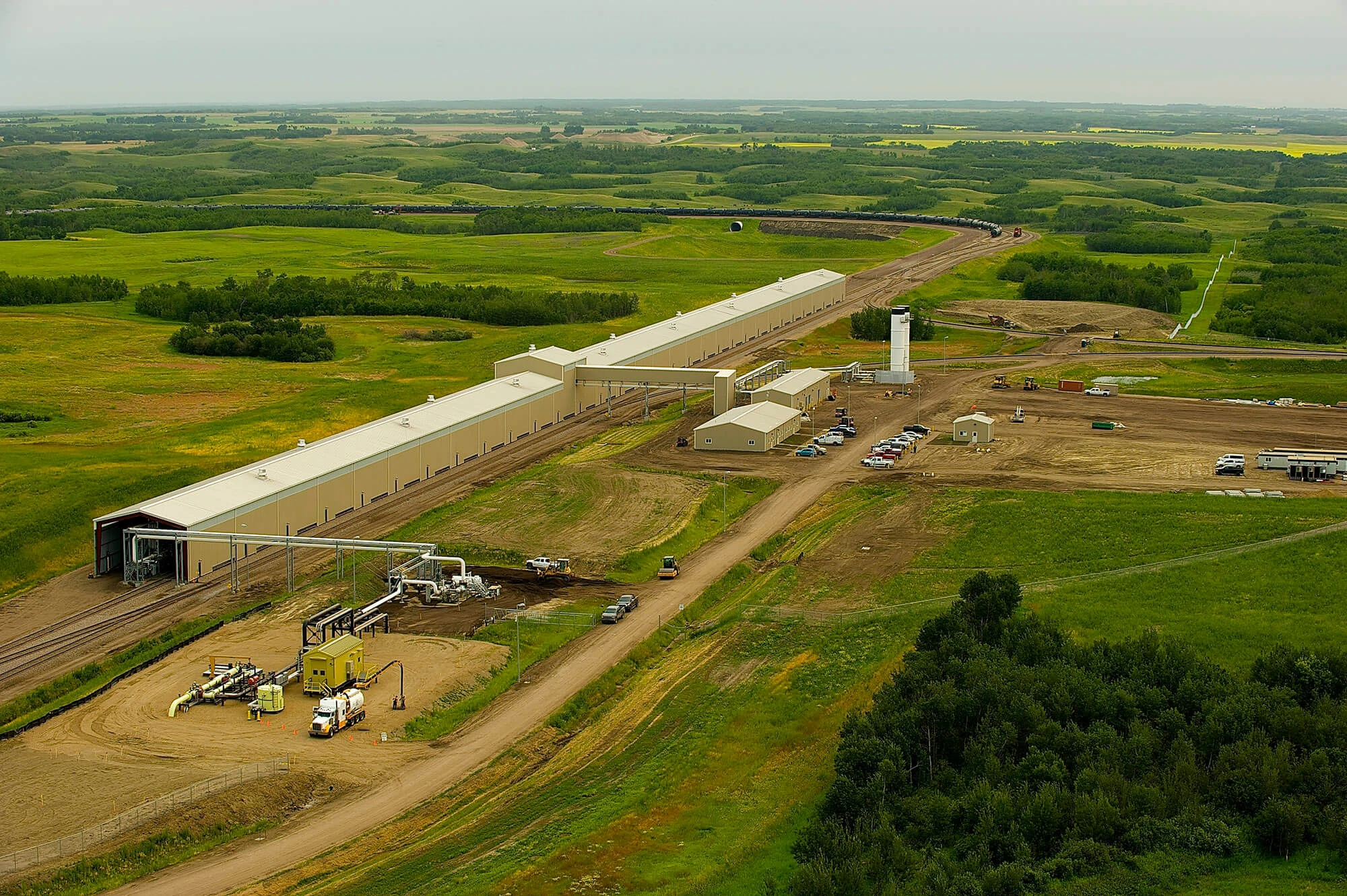
North America’s largest loading terminal
As one of the primary railcar loading points, Hardisty is one of the major crude oil hubs in North America and a major origination point of pipelines that export to the United States. SCS was asked to supply and construct a SafeRack crude oil loadout terminal spanning nearly half a mile. The USD Hardisty terminal can load up to two 120-railcar unit trains per day and consists of a fixed loading rack with 62 railcar loading positions enclosed, separate control, operator, and mechanical buildings, as well as a unit train staging area and loop tracks capable of holding multiple unit trains simultaneously. SCS also supplied and installed boom-supported loading arms with supply and vapor management systems.
Why SafeRack?
The SafeRack approach is collaborative. Let’s call it The SafeRack Way. Over many years, we have amassed a great deal of experience and understanding of the safety aspects involved in loading road tankers and railcars, as well as the behavioral habits of the operators.

Renewable Diesel
Is your facility compliant with ANSI, OSHA, and local safety codes? We can help!


EMERGENCY EYEWASHES / SHOWER EQUIPMENT AND THE ANSI/ISEA Z358.1 – 2014 STANDARD
Following eye contact, you must start washing with water immediately to prevent permanent damage. In the event of skin contact, you must start washing with water immediately to prevent slow-healing chemical burns.
Are you aware that ANSI guidelines state that Eye Wash/Drench Showers need to be located 10 seconds or 55′ from contaminates or hazardous materials and located on the same horizontal plane, with no obstructions? If bottom loading/unloading, an additional shower should be located at grade as well. SafeRack provides the above equipment plus much more needed to keep employees safe and expedite bulk chemical loading and unloading.
OSHA Regulation Experts – Does your existing chemical safety equipment or chemical loading systems meet OSHA’s latest requirements? SafeRack’s professional technical sales consultants are available to meet with your team to make recommendations to keep your facility in front of OSHA’s ever-changing country and region-specific standards and regulations, including lifeline and trolley beam fall arrest systems, metal stairs, and access platforms.

Petrochemicals are made from either petroleum or natural gas feedstock. A wide variety of petrochemicals are created/produced depending on the process.
Synthesis gas (SynGas) – A mixture comprising of carbon monoxide, carbon dioxide, and hydrogen. Common Synthesis Gas is Ammonia and Methanol. Often used for creating Fertilizers and explosives. Synthesis gas is a mixture of carbon monoxide and hydrogen used to make ammonia and methanol. Ammonia is used to make the fertilizer urea, and methanol is used as a solvent and chemical intermediate. Steam crackers are not to be confused with steam reforming plants used to produce hydrogen and ammonia.
Aromatics – Aromatics are hydrocarbons that consist exclusively of the elements carbon and hydrogen. Common Aromatics are Benzene, Toluene, and Xylenes. Often used for creating Dyes, synthetic detergents, fibers, and plastics.The catalytic reforming of naphtha produces aromatics, which include benzene, toluene, and xylene. Together they are referred to as BTX and are predominantly obtained from petroleum refineries by the extraction from the reformate produced in catalytic reformers using naphtha obtained from petroleum refineries.
Olefins – The most reactive class of hydrocarbons tend to crack. Common Olefins are Ethylene, Propylene, and Butadiene. Often used for creating plastics, and synthetic rubber. Chemical plants produce olefins by steam cracking of natural gas liquids like ethane and propane. Olefins include ethene, propene, and butadiene. Ethylene and propylene are chief sources of both plastic products and industrial chemicals. Butadiene is mainly used in the production of synthetic rubber.

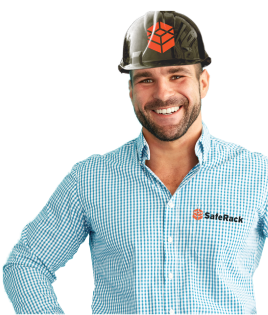

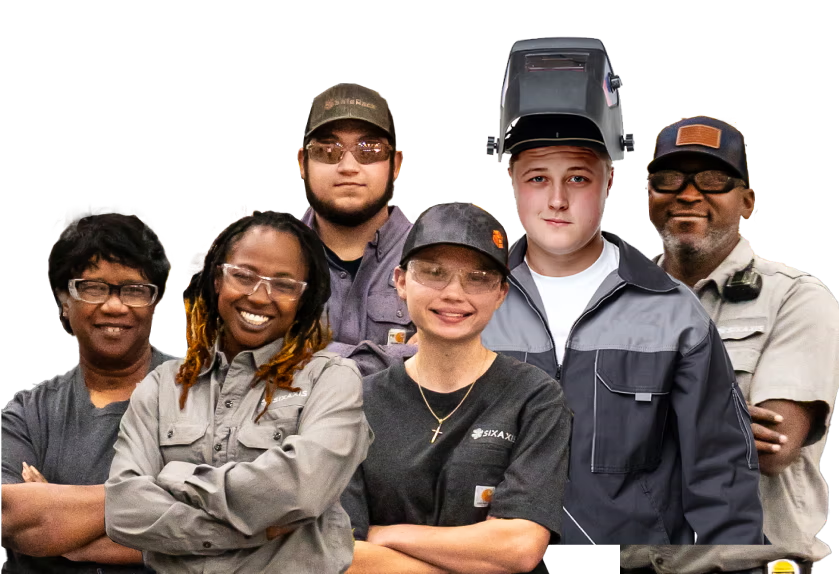




 Download
Download

